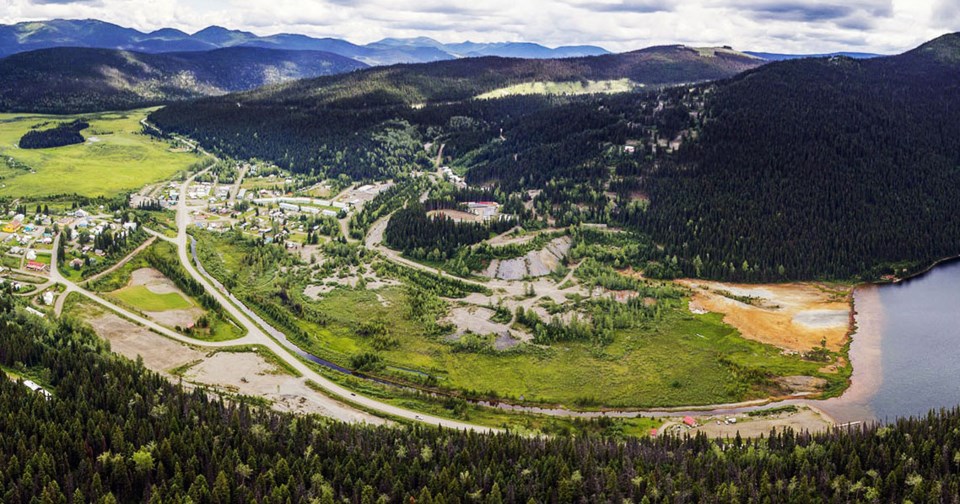Only in Alberta. That was the refrain when my colleague Natasha Bulowski broke the story that Alberta’s ruling party was considering striking carbon dioxide from the list of planet-heating pollutants and instead, embracing the gas as a "foundational nutrient for all life on Earth.”
Those types of broad-brush remarks about our fellow Canadians are unfair, of course. There are a good many people in my home province who wouldn’t buy into this line of thought for a second. However, Alberta is the powerhouse producer of oil and gas in Canada, and politically deserves its bad rap for thwarting efforts to reduce greenhouse gas emissions. Its premier, Danielle Smith, is an unabashed fossil fuel booster, who lashes out at absolutely anything that would make life more difficult for corporations mining the oil sands and fracking for gas.
She throws around threats of lawsuits against federal climate policy like a major league pitcher. Days before her leadership review, Alberta filed suit against the federal carbon pricing system, on grounds it was being unfairly applied across the country — pointing to the tax carveout on home heating oil in the Atlantic provinces.
This week, Smith threatened another court challenge, this one against the proposed federal oil and gas emissions cap, claiming it encroaches on provincial jurisdiction and threatens to lead the country “into economic and societal decline.”
And of course there are the roadblocks the Smith government has thrown up to thwart Alberta’s thriving renewable energy sector, designed to ensure fossil fuel companies maintain their edge.
But even against this backdrop, the CO2 love-fest motion by the United Conservative Party (UCP) seemed beyond the pale. But lo and behold, it passed. An overwhelming majority of UCP members voted last weekend to ditch the province’s emissions reduction targets and recognize carbon dioxide as “a foundational nutrient for all life on earth.”
That put Smith in a bit of a quandary. She couldn’t wholeheartedly promise to back the resolution; giving up on emissions reductions all together would rob the giant oilsands companies of huge amounts of money they want for their carbon capture projects and place them at a disadvantage internationally, where carbon intensity is starting to matter.
Smith tiptoed through that dilemma by saying she would honour the spirit but not the text of her party’s resolution and promised to continue support for the oil and gas industry’s commitment to reach net-zero by 2050.
All of this made us at Canada’s National Observer wonder where the motion came from in the first place. To be sure, some carbon dioxide is a foundational part of life on our planet; plants need it to grow. All animals exhale it when they breathe. Of course, just like coffee that eventually gives you the shakes, there is a limit to how much carbon dioxide is good for the planet.
The Alberta motion ignores entirely the fact we are well past the threshold. Carbon dioxide, produced when humans burn fossil fuels, and other greenhouse gases like methane, act like a blanket that traps more and more of the heat around the planet. As the planet warms, more energy is added to the atmosphere, creating more violent storms, less predictable weather patterns, drying forests and rising sea levels. The hurricanes, floods and forest fires tell you all you need to know about how far past optimum levels we have already gone.
Turns out the disinformation spreaders, who designed the pro-CO2 slogans and urged us to forget the facts, were from a front group for a coalition of American coal producers. They first blasted out the argument in 1997 to prevent climate policies curtailing coal. It has been in circulation ever since, used as a rallying cry by fossil fuel boosters, climate deniers, online conspiracy theorists, and now, sadly, some Canadian political parties. The same myth was propagated by at least two Conservative Party of B.C. candidates during the recent provincial election.
It all goes to show how persistent disinformation in the service of the fossil fuel industry can be, and how eager those who stand to profit from the economic status quo are to continue its spread. In this case, it is the political parties lacking foresight who are to blame.
So, no, it’s not only in Alberta. The UCP is just the latest one to jump on this bandwagon.




 On April 22, 1915 Germany launched the first large scale chemical weapon attack near Ypres, Belgium. (Canadian War Museum)
On April 22, 1915 Germany launched the first large scale chemical weapon attack near Ypres, Belgium. (Canadian War Museum)
 Macpherson enlisted with the newly formed Newfoundland Regiment in September 1914 as a captain. He headed up efforts to evaluate recruits. (The Rooms)
Macpherson enlisted with the newly formed Newfoundland Regiment in September 1914 as a captain. He headed up efforts to evaluate recruits. (The Rooms) Through his work with the War Office, Dr. Cluny Macpherson spent time in Egypt and helped train officers in how to use their gas masks. (The Rooms)
Through his work with the War Office, Dr. Cluny Macpherson spent time in Egypt and helped train officers in how to use their gas masks. (The Rooms)







 Frank Gogos, chair of the Royal Newfoundland Regiment Museum, says Macpherson deserves credit for devising a form of protection against chlorine gas. (Elizabeth Whitten/CBC)
Frank Gogos, chair of the Royal Newfoundland Regiment Museum, says Macpherson deserves credit for devising a form of protection against chlorine gas. (Elizabeth Whitten/CBC) After the war, Dr. Cluny Macpherson resumed his medical practice and was made a Companion of the Order of St. George and St. Michael for his hypo helmet invention. (Courtesy of the Estate of Yousuf Karsh)
After the war, Dr. Cluny Macpherson resumed his medical practice and was made a Companion of the Order of St. George and St. Michael for his hypo helmet invention. (Courtesy of the Estate of Yousuf Karsh) Ian Macpherson says there has been more interest in his grandfather’s role in inventing the gas mask in recent years. (Darryl Murphy/CBC)
Ian Macpherson says there has been more interest in his grandfather’s role in inventing the gas mask in recent years. (Darryl Murphy/CBC)









